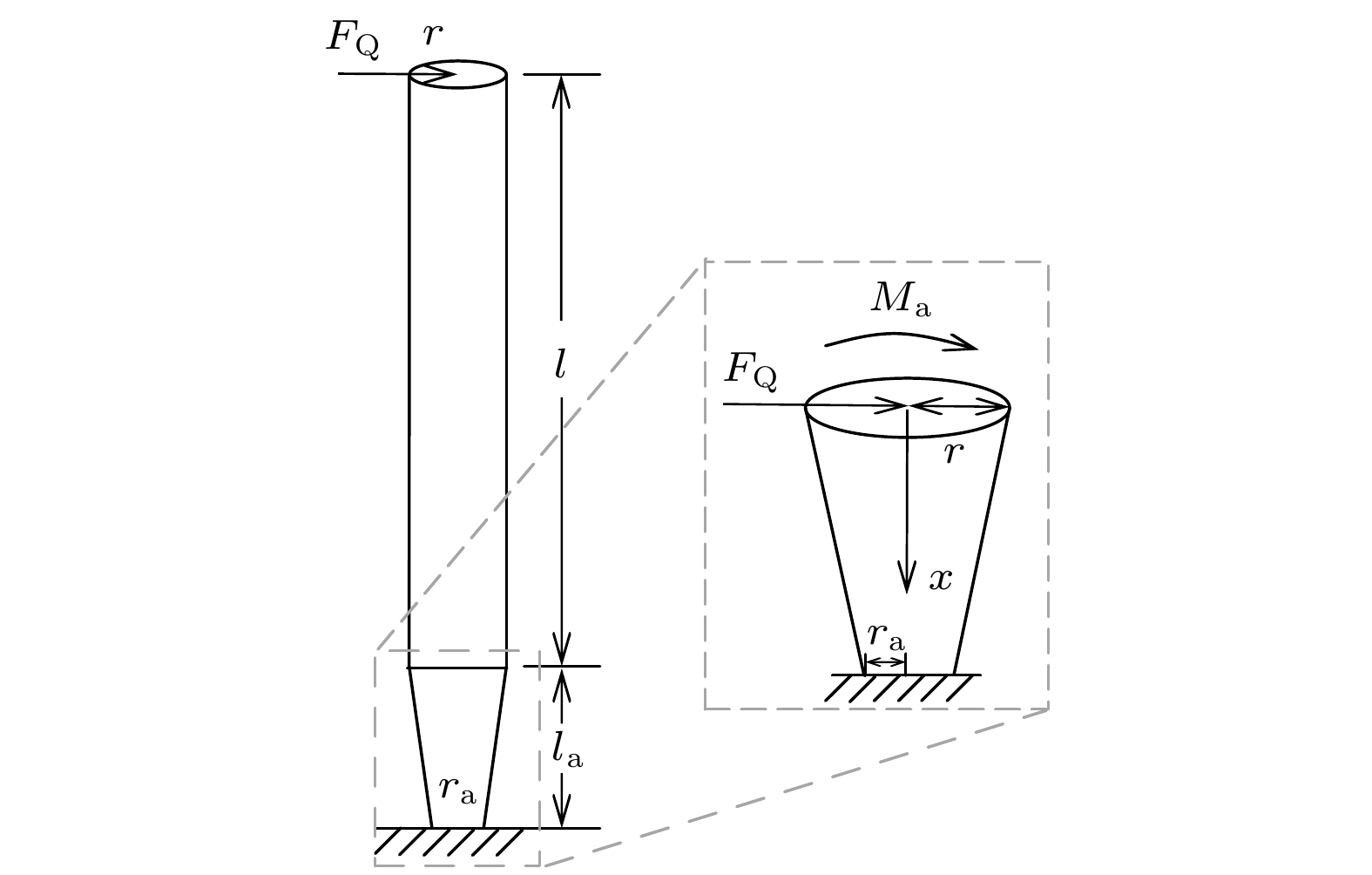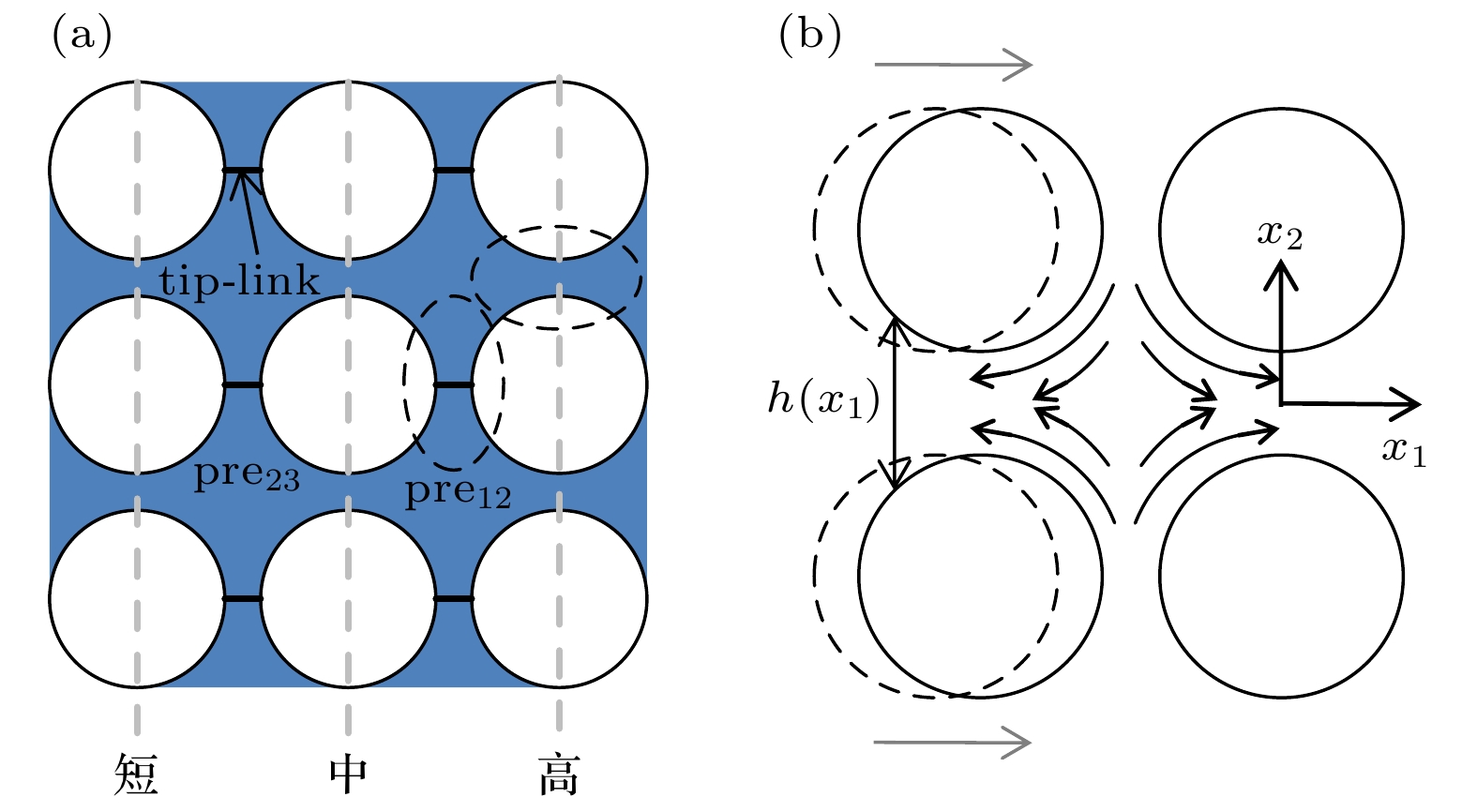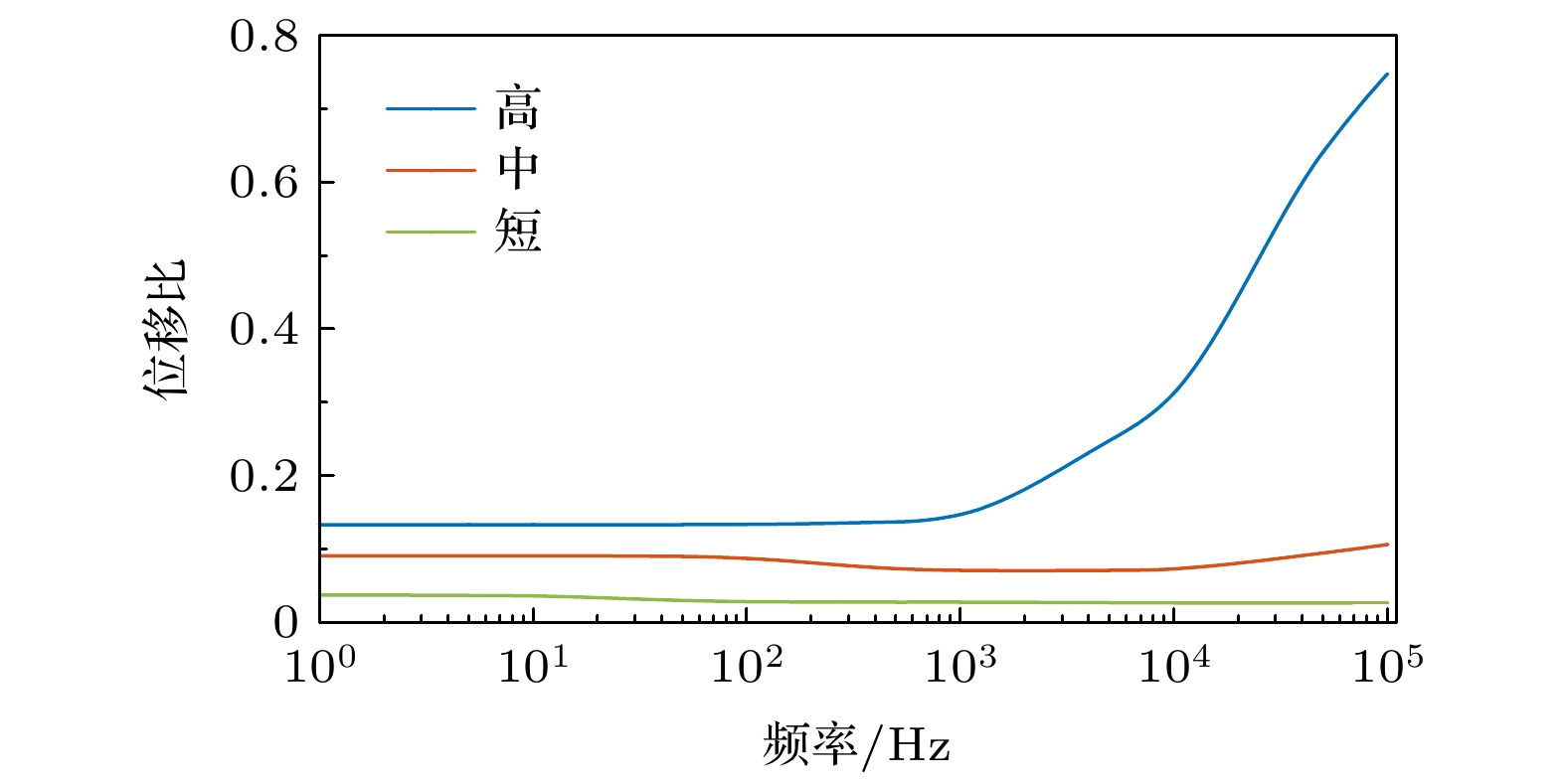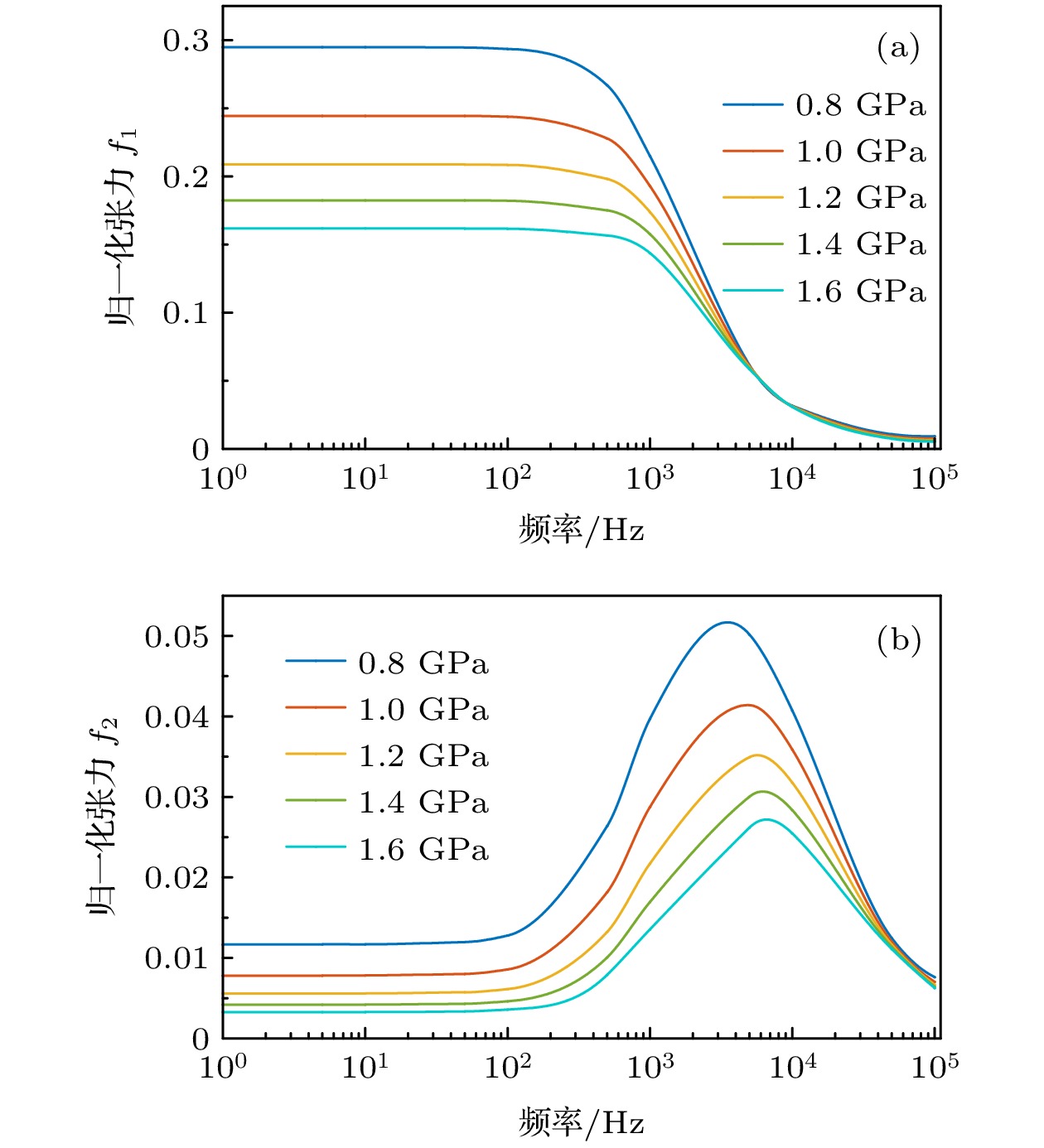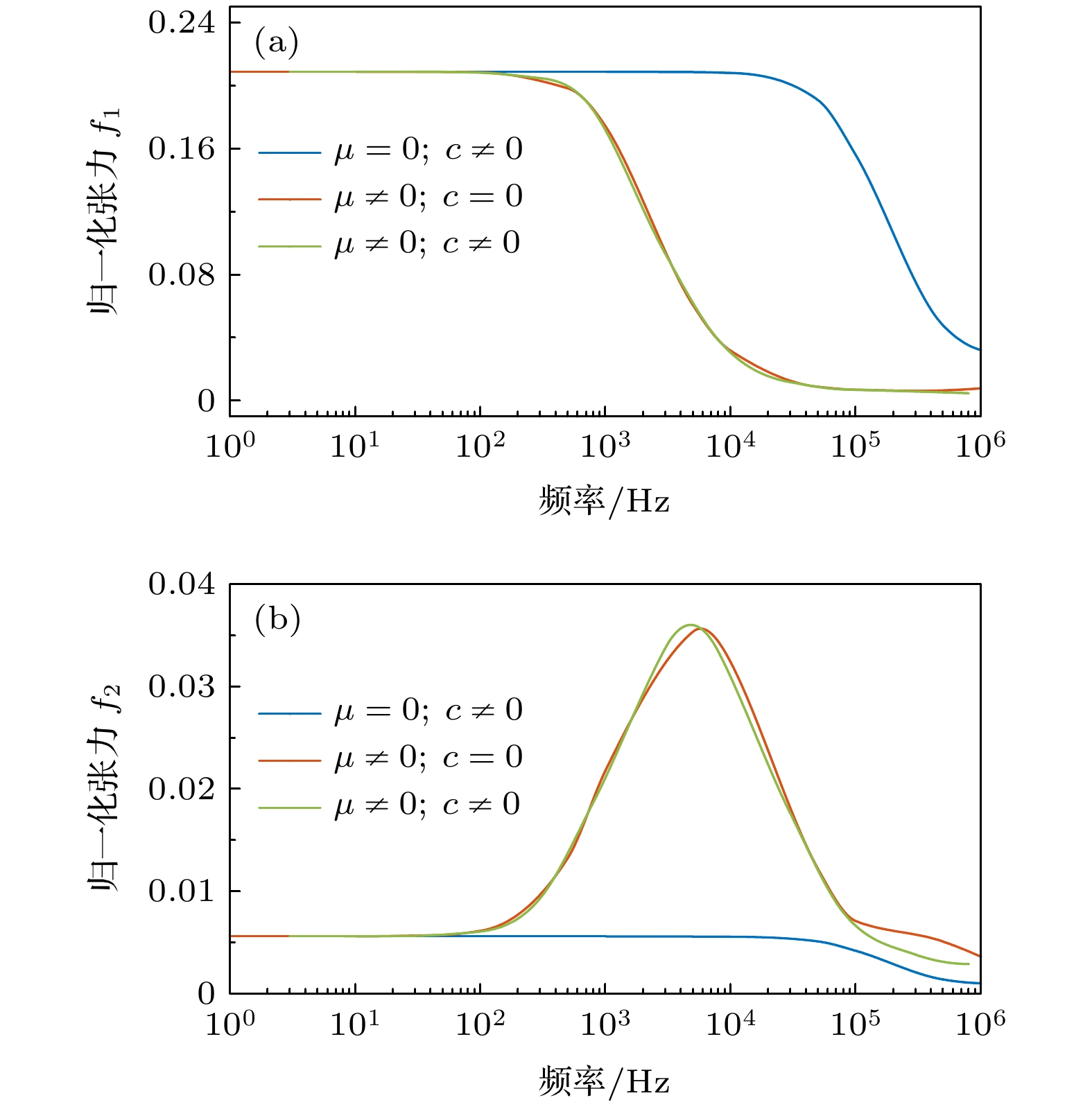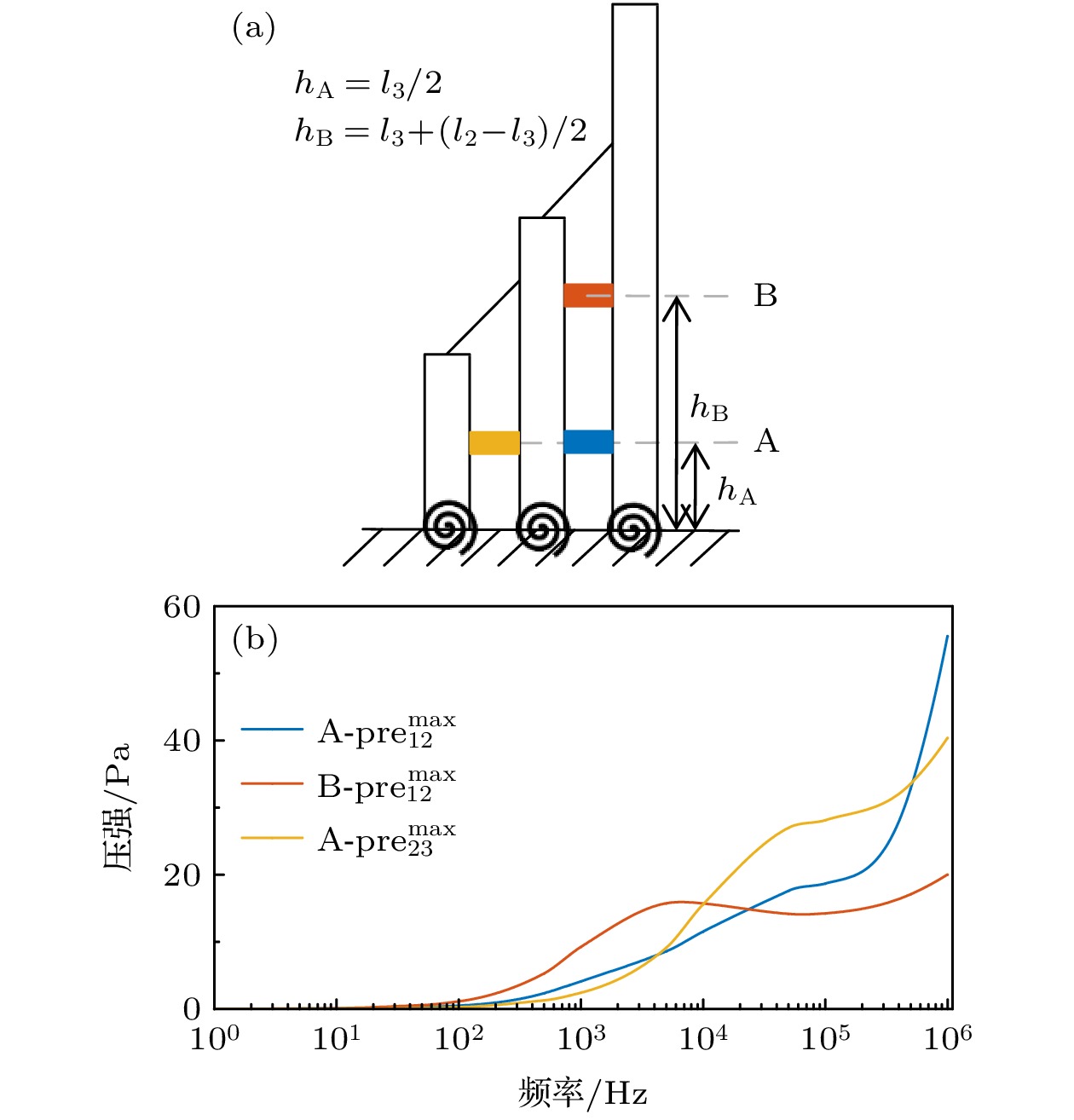-
Explanation of cochlear active acoustic amplification mechanism has been an unsolved medical problem. This mechanism is closely related to the motion of the stereocilia at the top of the outer hair cells in the cochlea. The motion of stereocilia is regulated by the tip-link tension and the fluid force of the lymph fluid. Therefore, studying the tip-link tension during the motion of stereocilia is an important part of the explanation of the cochlea's active sensory sound amplification mechanism. Most of previous studies regarded the stereocilia as rigid bodies, and ignored the influence of shaft bending when studying the mechanical properties of hair bundle. Most of the researches on elastic stereocilia used the finite element simulation, or simplified the model by ignoring the fluid-solid coupling with lymph fluid, or considered only static loading. Based on the Poiseuille flow combined with the distributed parameter model, the analytical solution of the elastic motion of stereocilia is derived in this work. The dynamic response of the stereocilia under the shear force of the tectorial membrane and the change law of tip-link tension are studied. The shaft bending produces a nonlinear accumulation of displacement at the height of the stereocilia. The higher the stereocilia, the more obvious the accumulation effect is. Under the action of dynamic load, the shaft bending contributes most to the displacement response in the tall stereocilium, and this contribution is easily affected by frequency change. Under low frequency load, the displacement response of tall stereocilium comes mainly from the root deflection. At high frequency, the shaft bending increases significantly, and the displacement response is produced by the combination of shaft bending and root deflection. The change of F-actin content in the cochlea exposed to noise would affect the stereocilia stiffness. In this paper, it is found that the decrease of stereociliary Young's modulus will increase the peak value of normalized tension and reduce its peak frequency, and the amplitude of normalized tension will increase under the low frequency shear load. Since the tip-link is connected to an ion channel, the change of normalized tension will affect the probability of ion channels opening, change the ability of cochlea to perceive the sound of corresponding frequency, and then affect the frequency selectivity of hair bundle. Therefore, previous studies of stereocilia regarded as rigid bodies underestimated the response of the cochlea to low-frequency acoustic signals. This model accurately describes the law of tip-link tension and provides a corresponding theoretical explanation for hearing impairment caused by noise environment. Previous experiments have shown that the lymphatic viscous resistance has little effect on the deflection of stereocilia. In this paper, when the viscous resistance is ignored, the tip-link tension changes very little, and when the pressure between the stereocilia is ignored, the tip-link tension changes significantly and the resonance peak of
$ {f_2} $ disappears. Therefore, lymphatic fluid regulates the resonance properties of the tip-link tension by creating the pressure between the stereocilia. The presence of lymphatics is essential for generating the frequency characteristics of the hair bundle. In the low frequency domain, the motion of stereocilia is regulated mainly by tip-link, and in the high frequency domain, it is regulated mainly by lymphatic pressure.-
Keywords:
- stereocilia /
- deformed body /
- tip-link tension /
- frequency characteristics
[1] Colantonio J R, Vermot J, Wu D, Langenbacher A D, Fraser S, Chen J N, Hill K L 2009 Nature 457 205
 Google Scholar
Google Scholar
[2] Pickles J O, Comis S D, Osborne M P 1984 Hearing Res. 15 103
 Google Scholar
Google Scholar
[3] Auer M, Koster A, Ziese U, Bajaj C, Volkmann N, Wang D, Hudspeth A 2008 J. Assoc. Res. Otolaryngol. 9 215
 Google Scholar
Google Scholar
[4] Assad J A, Shepherd G M, Corey D P 1991 Neuron 7 985
 Google Scholar
Google Scholar
[5] Tobin M, Chaiyasitdhi A, Michel V, Michalski N, Martin P 2019 eLife 8 e43473
 Google Scholar
Google Scholar
[6] Maoiléidigh D Ó, Jülicher F 2010 J. Acoust. Soc. Am. 128 1175
 Google Scholar
Google Scholar
[7] Fettiplace R, Crawford A C Evans M G 1992 Ann. N. Y. Acad. Sci. 656 1
 Google Scholar
Google Scholar
[8] Beurg M, Fettiplace R, Nam J H, Ricci A J 2009 Nat. Neurosci. 12 553
 Google Scholar
Google Scholar
[9] Furness D N, Hackney C M, Evans M G 2010 J. Physiol. 588 765
 Google Scholar
Google Scholar
[10] Park J, Wei G W 2013 J. Comput. Neurosci. 35 231
 Google Scholar
Google Scholar
[11] Jaramillo F, Hudspeth A J 1993 PNAS 90 1330
 Google Scholar
Google Scholar
[12] Lim K, Park S 2009 J. Biomech. 42 2158
 Google Scholar
Google Scholar
[13] Kachar B, Parakkal M, Kurc M, Zhao Y, Gillespie P 2000 PNAS 97 13336
 Google Scholar
Google Scholar
[14] Kazmierczak P, Sakaguchi H, Tokita J, Wilson-Kubalek E M, Milligan R A 2007 Nature 449 87
 Google Scholar
Google Scholar
[15] Ge J P, Elferich J, Goehring A, Zhao J, Gouaux E 2018 eLife 7 e38770
 Google Scholar
Google Scholar
[16] Richardson G P, Petit C 2019 Cold Spring Harbor Perspect. Med. 9 a033142
 Google Scholar
Google Scholar
[17] Dionne G, Qiu X F, Rapp M, Liang X P, Zhao B, Peng G H, Katsamba P S, Ahlsen G, Rubinstein R, Potter C S, Carragher B, Honig B, Müller U, Shapiro L 2018 Neuron 99 480
 Google Scholar
Google Scholar
[18] Bartsch T F, Hengel F E, Oswald A, Dionne G, Chipendo I V, Mangat S S, El Shatanofy M, Shapiro L, Müller U, Hudspeth A J 2019 PNAS 116 11048
 Google Scholar
Google Scholar
[19] Duncan R K, Grant J W 1997 Hearing Res. 104 15
 Google Scholar
Google Scholar
[20] Cotton J, Grant W 2004 Hearing Res. 197 96
 Google Scholar
Google Scholar
[21] Cotton J, Grant W 2004 Hearing Res. 197 105
 Google Scholar
Google Scholar
[22] Nam J H, Cotton J R, Grant J W 2005 J. Vestib. Res. 15 263
 Google Scholar
Google Scholar
[23] Tilney L G, Tilney M S 1986 Hearing Res. 22 55
 Google Scholar
Google Scholar
[24] You L, Cowin S C, Schaffler M B, Weinbaum S 2001 J. Biomech. 34 1375
 Google Scholar
Google Scholar
[25] Han Y F, Cowin S C, Schaffler M B, Weinbaum S 2004 PNAS 101 16689
 Google Scholar
Google Scholar
[26] Lin H W, Schneider M E, Kachar B 2005 Curr. Opin. Cell Biol. 17 55
 Google Scholar
Google Scholar
[27] Hackney C M, Furness D N 1995 Am. J. Physiol. 268 1
 Google Scholar
Google Scholar
[28] Strelioff D, Flock A 1984 Hearing Res. 15 19
 Google Scholar
Google Scholar
[29] Furness D N, Zetes D E, Hackney C M 1997 Proc. Biol. Sci. 264 45
 Google Scholar
Google Scholar
[30] Gittes F, Mickey B, Nettleton J, Howard J 1993 J. Cell Biol. 120 923
 Google Scholar
Google Scholar
[31] Howard J, Hudspeth A J 1988 Neuron 1 189
 Google Scholar
Google Scholar
[32] Tsuprun V, Santi P 2002 J. Histochem. Cytochem. 50 493
 Google Scholar
Google Scholar
[33] Flock Å, Strelioff D 1984 Nature 310 597
 Google Scholar
Google Scholar
[34] Szymko Y M, Dimitri P S, Saunders J C 1992 Hearing Res. 59 241
 Google Scholar
Google Scholar
[35] Fridberger A, Tomo I, Ulfendahl M, Monvel J B 2006 PNAS 103 1918
 Google Scholar
Google Scholar
[36] Vlajkovic S M, Housley G D, Muñoz D J B, Robson S C, Sévigny J, Wang C J H, Thorne P R 2004 Neuroscience 126 763
 Google Scholar
Google Scholar
[37] Avinash G B, Nuttall A L, Raphael Y 1993 Hearing Res. 67 139
 Google Scholar
Google Scholar
[38] Murakoshi M, Yoshida N, Kitsunai Y, Iida K, Kumano S, Suzuki T, Kobayashi T, Wada H 2006 Brain Res. 1107 121
 Google Scholar
Google Scholar
[39] Kondrachuk A V 2006 Adv. Space Res. 38 1052
 Google Scholar
Google Scholar
[40] Kozlov A S, Baumgart J, Risler T, Versteegh C P, Hudspeth A J 2011 Nature 474 376
 Google Scholar
Google Scholar
[41] Verpy E, Leibovici M, Michalski N, Goodyear R J, Houdon C, Weil D, Richardson G P, Petit C 2011 J. Comp. Neurol. 519 194
 Google Scholar
Google Scholar
-
表 1 模型参数
Table 1. Model parameters.
参数名称 参数值 静纤毛高度($l_1 $, $l_2 $, $l_3 $)/μm 6.0, 2.8, 1.4 静纤毛底圆锥高度($l_{{\rm{a}}1} $, $l_{{\rm{a}}2} $, $l_{{\rm{a}}3} $)/μm 1.6, 1.0, 0.6 高, 中静纤毛侧壁上tip-link
连接点高度($l_{{\rm{t}}1} $, $l_{{\rm{t}}2} $)/μm3.0, 1.6 圆柱体半径(r)/nm 150 圆锥最小半径(ra)/nm 60 相邻静纤毛间距(h0)/nm 50 静纤毛体均布质量(m)/(kg·m–1) 8.48 × 10–11 静纤毛杨氏模量(E)/GPa 1.2 淋巴液粘度系数(c = μ)/(Pa·s) 6.59 × 10–4 tip-link轴与水平面夹角(β1 = β2) π/4 tip-link弹性常数(ktip1 = ktip2)/(N·m–1) 5.3 × 10–4 -
[1] Colantonio J R, Vermot J, Wu D, Langenbacher A D, Fraser S, Chen J N, Hill K L 2009 Nature 457 205
 Google Scholar
Google Scholar
[2] Pickles J O, Comis S D, Osborne M P 1984 Hearing Res. 15 103
 Google Scholar
Google Scholar
[3] Auer M, Koster A, Ziese U, Bajaj C, Volkmann N, Wang D, Hudspeth A 2008 J. Assoc. Res. Otolaryngol. 9 215
 Google Scholar
Google Scholar
[4] Assad J A, Shepherd G M, Corey D P 1991 Neuron 7 985
 Google Scholar
Google Scholar
[5] Tobin M, Chaiyasitdhi A, Michel V, Michalski N, Martin P 2019 eLife 8 e43473
 Google Scholar
Google Scholar
[6] Maoiléidigh D Ó, Jülicher F 2010 J. Acoust. Soc. Am. 128 1175
 Google Scholar
Google Scholar
[7] Fettiplace R, Crawford A C Evans M G 1992 Ann. N. Y. Acad. Sci. 656 1
 Google Scholar
Google Scholar
[8] Beurg M, Fettiplace R, Nam J H, Ricci A J 2009 Nat. Neurosci. 12 553
 Google Scholar
Google Scholar
[9] Furness D N, Hackney C M, Evans M G 2010 J. Physiol. 588 765
 Google Scholar
Google Scholar
[10] Park J, Wei G W 2013 J. Comput. Neurosci. 35 231
 Google Scholar
Google Scholar
[11] Jaramillo F, Hudspeth A J 1993 PNAS 90 1330
 Google Scholar
Google Scholar
[12] Lim K, Park S 2009 J. Biomech. 42 2158
 Google Scholar
Google Scholar
[13] Kachar B, Parakkal M, Kurc M, Zhao Y, Gillespie P 2000 PNAS 97 13336
 Google Scholar
Google Scholar
[14] Kazmierczak P, Sakaguchi H, Tokita J, Wilson-Kubalek E M, Milligan R A 2007 Nature 449 87
 Google Scholar
Google Scholar
[15] Ge J P, Elferich J, Goehring A, Zhao J, Gouaux E 2018 eLife 7 e38770
 Google Scholar
Google Scholar
[16] Richardson G P, Petit C 2019 Cold Spring Harbor Perspect. Med. 9 a033142
 Google Scholar
Google Scholar
[17] Dionne G, Qiu X F, Rapp M, Liang X P, Zhao B, Peng G H, Katsamba P S, Ahlsen G, Rubinstein R, Potter C S, Carragher B, Honig B, Müller U, Shapiro L 2018 Neuron 99 480
 Google Scholar
Google Scholar
[18] Bartsch T F, Hengel F E, Oswald A, Dionne G, Chipendo I V, Mangat S S, El Shatanofy M, Shapiro L, Müller U, Hudspeth A J 2019 PNAS 116 11048
 Google Scholar
Google Scholar
[19] Duncan R K, Grant J W 1997 Hearing Res. 104 15
 Google Scholar
Google Scholar
[20] Cotton J, Grant W 2004 Hearing Res. 197 96
 Google Scholar
Google Scholar
[21] Cotton J, Grant W 2004 Hearing Res. 197 105
 Google Scholar
Google Scholar
[22] Nam J H, Cotton J R, Grant J W 2005 J. Vestib. Res. 15 263
 Google Scholar
Google Scholar
[23] Tilney L G, Tilney M S 1986 Hearing Res. 22 55
 Google Scholar
Google Scholar
[24] You L, Cowin S C, Schaffler M B, Weinbaum S 2001 J. Biomech. 34 1375
 Google Scholar
Google Scholar
[25] Han Y F, Cowin S C, Schaffler M B, Weinbaum S 2004 PNAS 101 16689
 Google Scholar
Google Scholar
[26] Lin H W, Schneider M E, Kachar B 2005 Curr. Opin. Cell Biol. 17 55
 Google Scholar
Google Scholar
[27] Hackney C M, Furness D N 1995 Am. J. Physiol. 268 1
 Google Scholar
Google Scholar
[28] Strelioff D, Flock A 1984 Hearing Res. 15 19
 Google Scholar
Google Scholar
[29] Furness D N, Zetes D E, Hackney C M 1997 Proc. Biol. Sci. 264 45
 Google Scholar
Google Scholar
[30] Gittes F, Mickey B, Nettleton J, Howard J 1993 J. Cell Biol. 120 923
 Google Scholar
Google Scholar
[31] Howard J, Hudspeth A J 1988 Neuron 1 189
 Google Scholar
Google Scholar
[32] Tsuprun V, Santi P 2002 J. Histochem. Cytochem. 50 493
 Google Scholar
Google Scholar
[33] Flock Å, Strelioff D 1984 Nature 310 597
 Google Scholar
Google Scholar
[34] Szymko Y M, Dimitri P S, Saunders J C 1992 Hearing Res. 59 241
 Google Scholar
Google Scholar
[35] Fridberger A, Tomo I, Ulfendahl M, Monvel J B 2006 PNAS 103 1918
 Google Scholar
Google Scholar
[36] Vlajkovic S M, Housley G D, Muñoz D J B, Robson S C, Sévigny J, Wang C J H, Thorne P R 2004 Neuroscience 126 763
 Google Scholar
Google Scholar
[37] Avinash G B, Nuttall A L, Raphael Y 1993 Hearing Res. 67 139
 Google Scholar
Google Scholar
[38] Murakoshi M, Yoshida N, Kitsunai Y, Iida K, Kumano S, Suzuki T, Kobayashi T, Wada H 2006 Brain Res. 1107 121
 Google Scholar
Google Scholar
[39] Kondrachuk A V 2006 Adv. Space Res. 38 1052
 Google Scholar
Google Scholar
[40] Kozlov A S, Baumgart J, Risler T, Versteegh C P, Hudspeth A J 2011 Nature 474 376
 Google Scholar
Google Scholar
[41] Verpy E, Leibovici M, Michalski N, Goodyear R J, Houdon C, Weil D, Richardson G P, Petit C 2011 J. Comp. Neurol. 519 194
 Google Scholar
Google Scholar
Catalog
Metrics
- Abstract views: 7507
- PDF Downloads: 65
- Cited By: 0















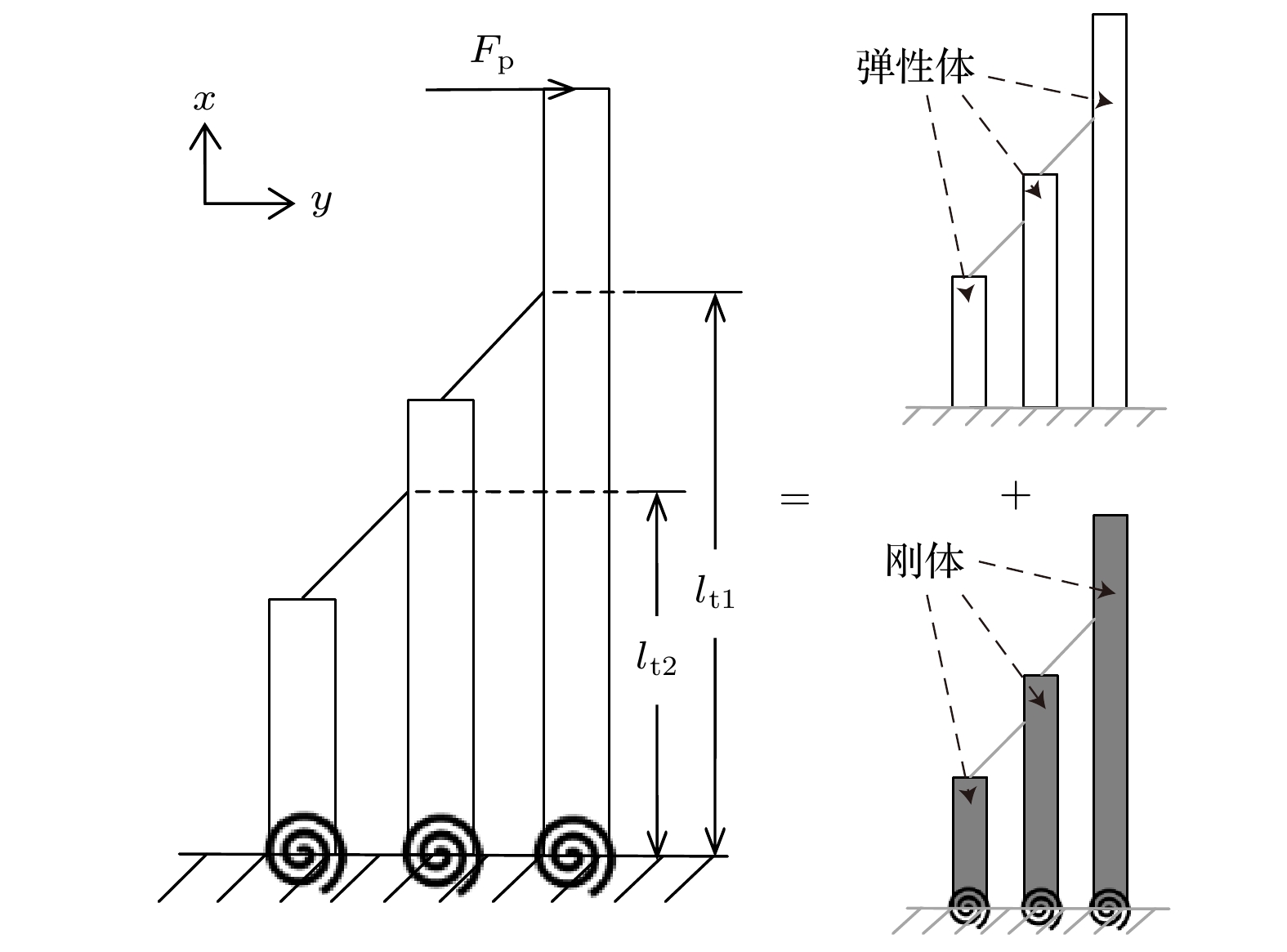
 DownLoad:
DownLoad:
